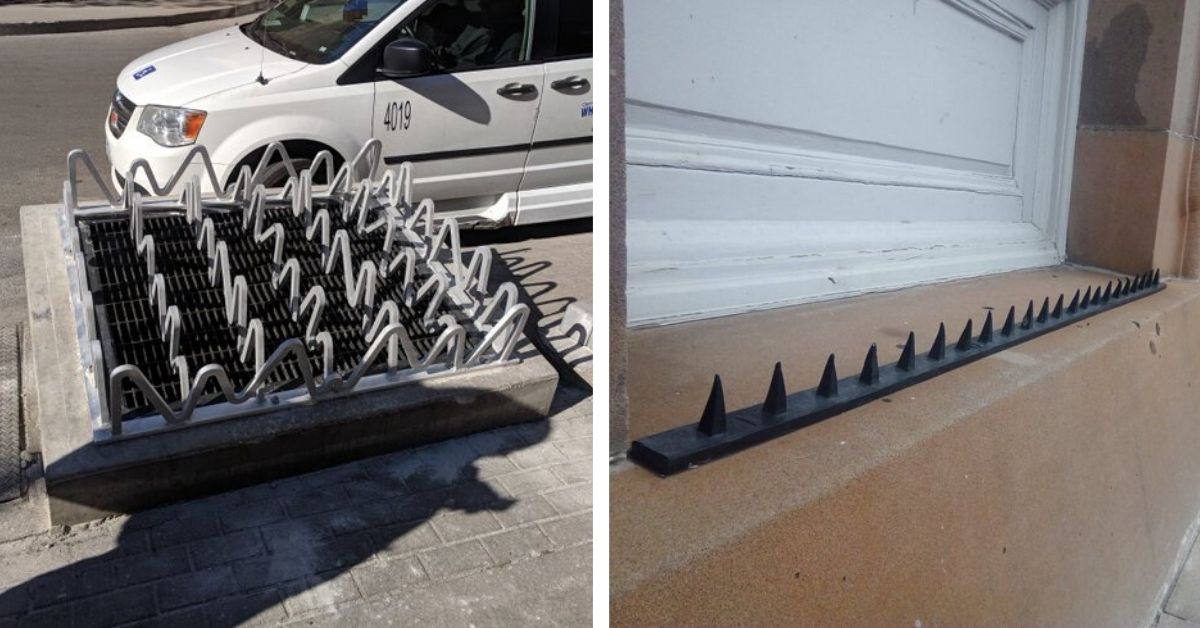In 2022, the Department of Housing and Urban Development identified 582,000 people experiencing homelessness in the United States. While some people view homeless people as dangerous, dirty, or drug addicts, they are still people who deserve somewhere safe to sleep at night, regardless of their situation.
Despite this, many cities have taken it upon themselves to effectively “rid” the area of homeless people, attempting to make it look “cleaner” and “safer.” Metal or concrete spikes are added under bridges, armrests are added to benches so nobody can lie down, and divots are placed on the siding of structures, making them hard to sit on.
This is a common sight across the country—from New York City, New York, to Austin, Texas, and even Grand Rapids, Michigan, “hostile” architecture lines the streets. While the homeless attempt to sleep somewhere somewhat bearable, funding goes towards stopping them from finding somewhere acceptable to sleep instead of helping them get out of whatever situation they are in.
While some may argue that homeless shelters are available for a reason, they are not always the best option for those who are experiencing homelessness. The rate of violent crime among the homeless population is approximately 40 times higher than it is for the average population due to the stress of living in such poor conditions and desperation, causing gathering places such as homeless shelters to be a hub for dangerous activity at times. So, to protect their families, some homeless families may opt to avoid shelters.
And, despite the efforts of some cities to make it appear this way, the homeless population does not go away with the implementation of anti-homeless infrastructure. The new benches and other architectural implementations may reduce the appearance of homelessness, but in actuality, it decreases the homeless population by zero and only ends up dehumanizing them.
In fact, when I see anti-homeless benches and bridges, I can only imagine that the city cares only about its appearance rather than the people who need assistance to get off of the streets and into a home. It’s heartbreaking to see how little sympathy that commissioners have for people who already have next to nothing—they make even their minimal “comforts” in life nonexistent to try and up the reputation of the urban environment.
Many people claim that they feel unsafe around homeless people, and this is a city’s attempt to bring comfort and security to city dwellers. However, homeless people are not dangerous for attempting to fall asleep somewhere. Homeless people are not subhuman because they aren’t able to afford somewhere to live. Homeless people deserve help, not to be shoved out of the public eye because they “make people uncomfortable.”
So, anti-homeless architecture is not only making homeless people’s lives more difficult than they already are, but it is also putting money into something that is highly ineffective at solving the root of the problem. Instead, funding for anti-homeless architecture should be put towards helping homeless people find warm, comfortable, and safe places to stay.




























































































